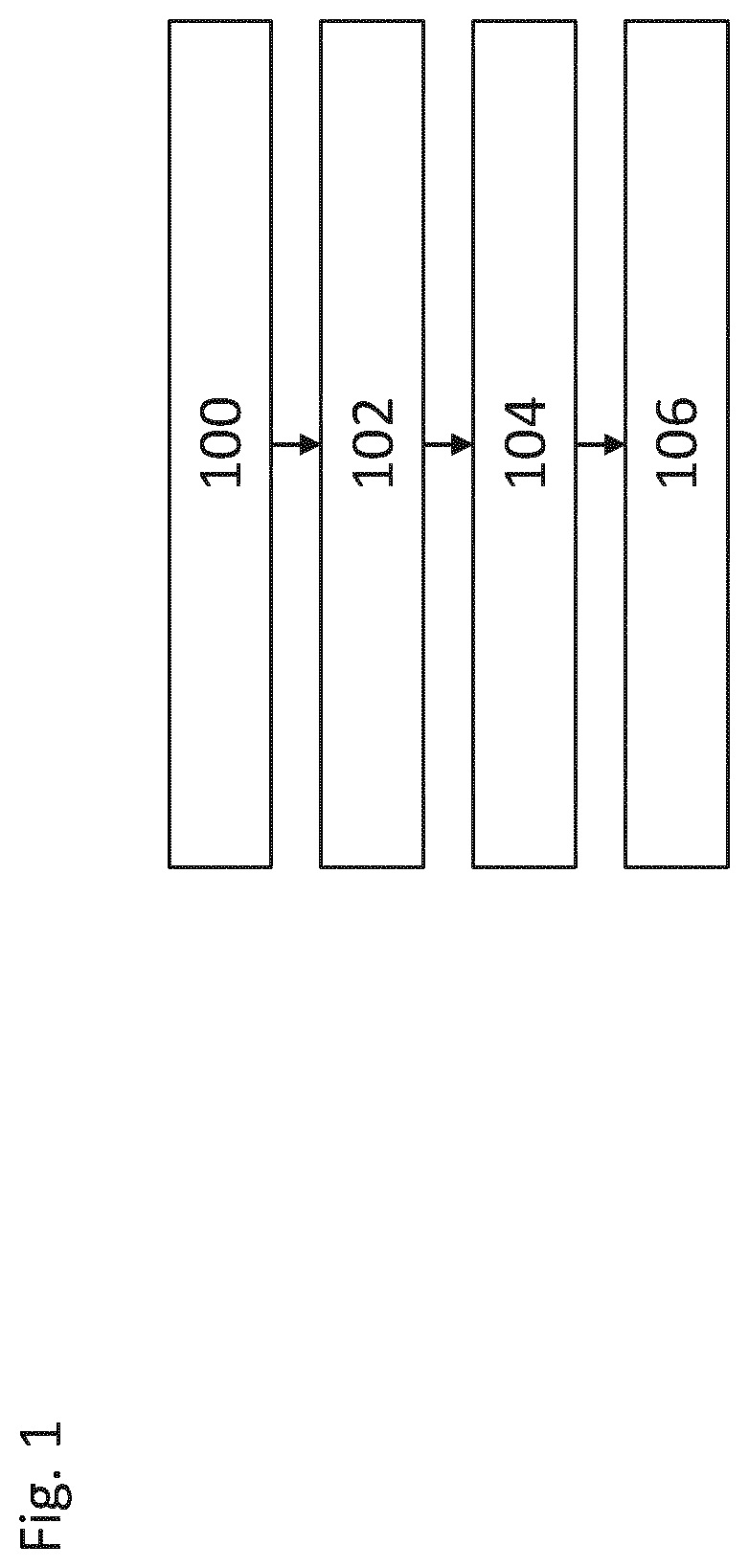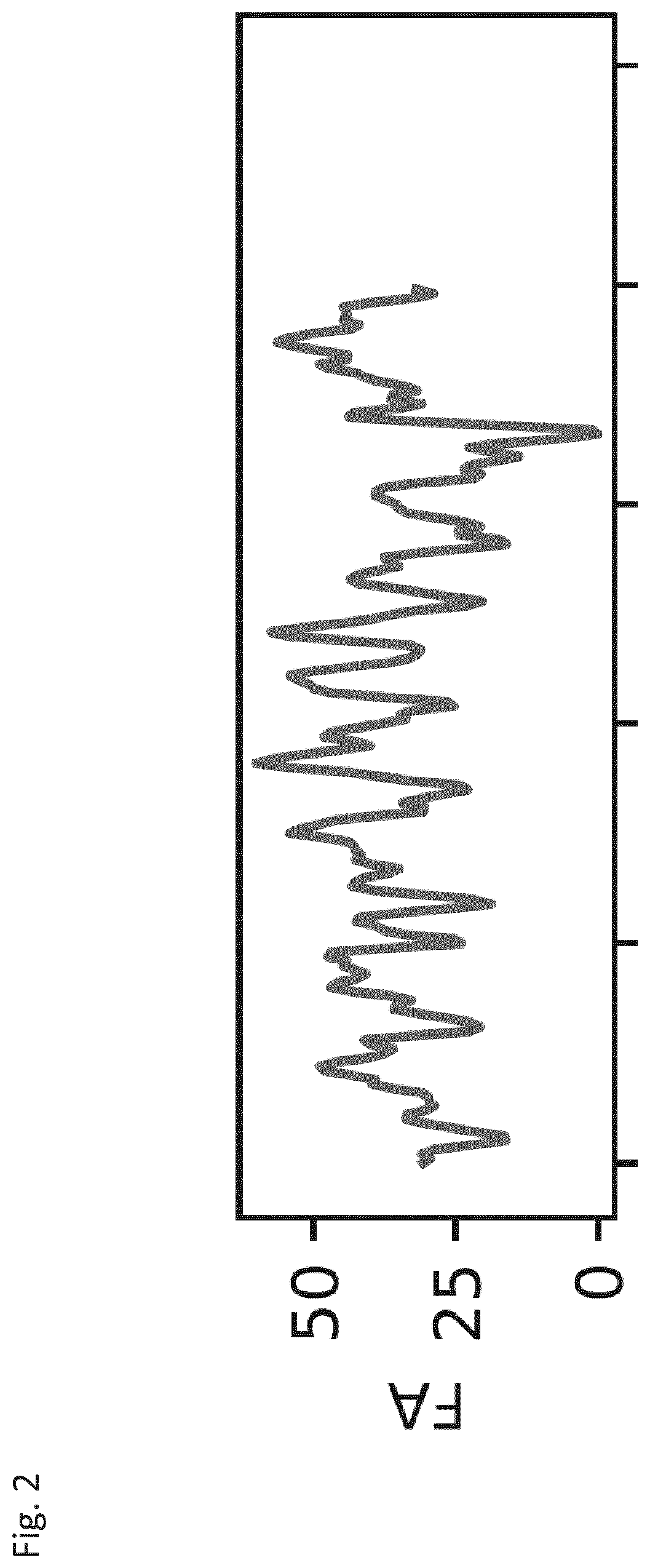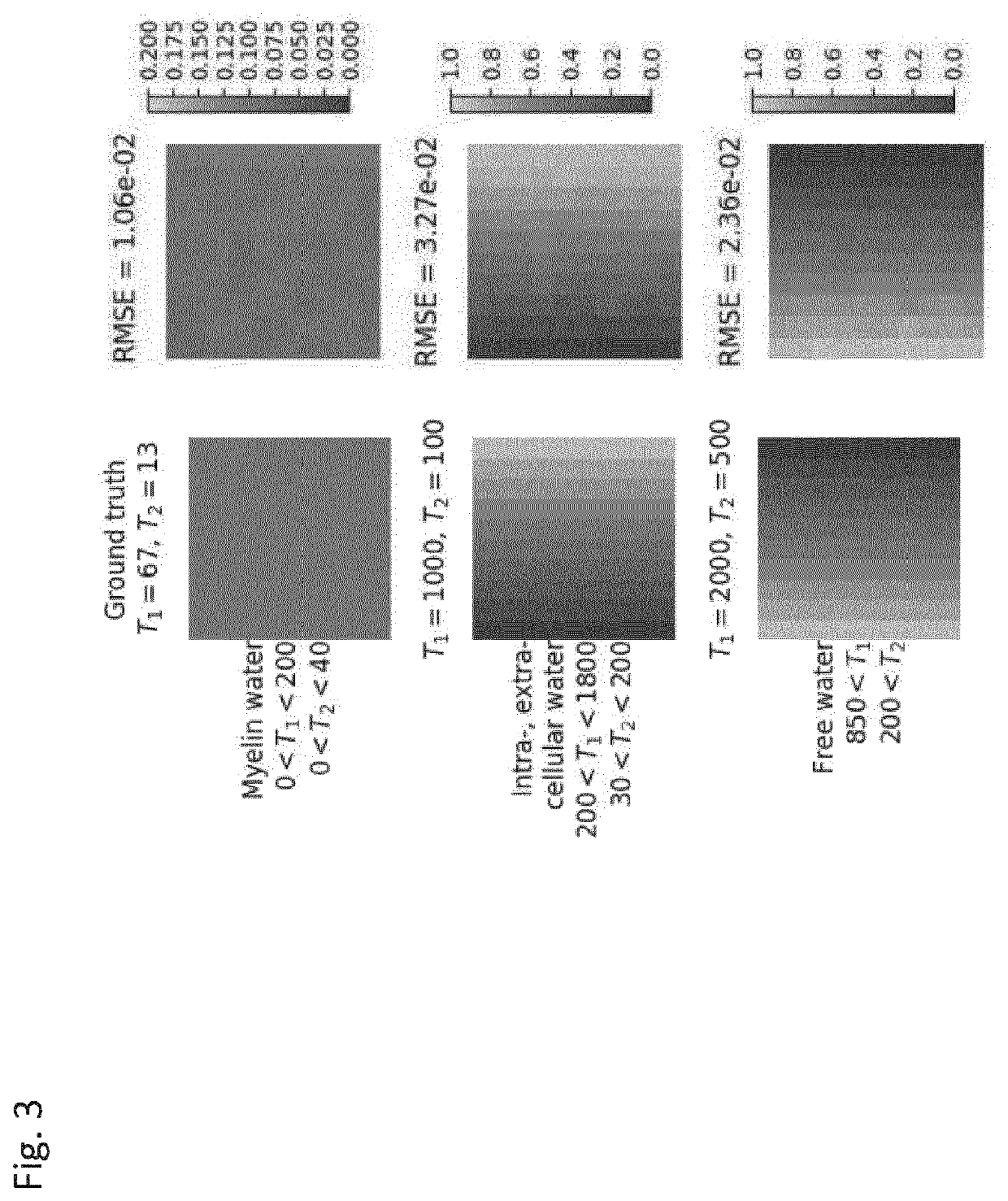A method for multi-component analysis on MRI measurement data
a multi-component analysis and measurement data technology, applied in the field of magnetic resonance imaging, can solve problems such as difficulty in interpreting results over a larger region of interest, and achieve the effect of convenient interpretation
- Summary
- Abstract
- Description
- Claims
- Application Information
AI Technical Summary
Benefits of technology
Problems solved by technology
Method used
Image
Examples
Embodiment Construction
[0026]FIG. 1 diagrammatically shows a method according to embodiments of the invention. First, temporal signal evolutions are being simulated 100, wherein different simulated temporal signal evolutions represent different components and are based on different values of the one or more tissue component parameters. Depending on the tissue component parameters of interest (e.g. T1, T2, etc) and the expected values of the tissue component parameters, the temporal signal evolutions are simulated. The creation of the set of simulated temporal signal evolutions does not necessarily need to be repeated for each patient. Therefore, this creation could also be performed at a different location and / or by different means from where and by which the multi-component analysis is being performed. Preferably, temporal signal evolutions are being simulated for a variety of B1 values.
[0027]Then, in step 102, a B1 map is received. This B1 map provides B1 values related to the voxels of interest for the...
PUM
 Login to View More
Login to View More Abstract
Description
Claims
Application Information
 Login to View More
Login to View More - R&D
- Intellectual Property
- Life Sciences
- Materials
- Tech Scout
- Unparalleled Data Quality
- Higher Quality Content
- 60% Fewer Hallucinations
Browse by: Latest US Patents, China's latest patents, Technical Efficacy Thesaurus, Application Domain, Technology Topic, Popular Technical Reports.
© 2025 PatSnap. All rights reserved.Legal|Privacy policy|Modern Slavery Act Transparency Statement|Sitemap|About US| Contact US: help@patsnap.com



